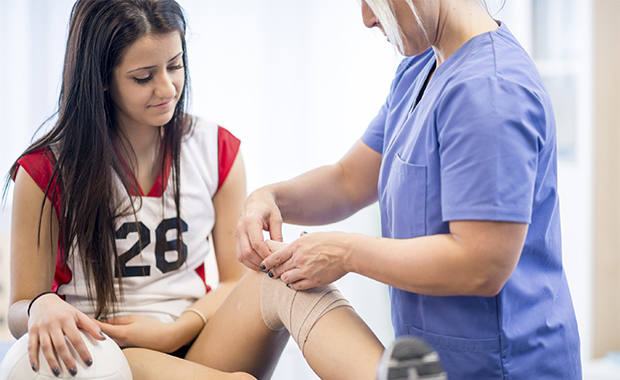2016/7/27 10:26:03

This article originally appeared on BetterBraces.com.
Practice isn’t the only time to prevent injuries in volleyball. What athlete’s do off the court, before and after practice or a game, can help prevent aches and pains.
In the sport of volleyball it’s important to do strengthening exercises on areas that are at an increased risk of injury do to the nature of the sport. Heidi Greenwood, former University of North Dakota volleyball athlete and high school coach, is no stranger to sport-related injuries. Through her experience, she knows how to avoid injury with simple tricks that any athlete can do, no matter how much time limitations he or she has.
Before jumping on the court, try these tips from Greenwood to warm up and avoid injury.
What is prehab?
Prehab is actively utilizing a series of exercises and movements to prevent injury. Prehab exercises do not require a great deal of time, but require precise and focused technique to be effective. Greenwood offers prehab exercises to help avoid common volleyball injuries: shoulder and ankle injuries.
How often should you prehab?
Three times per week in the off-season and two times per week during season.
How many reps and sets should you do?
Prehab exercises should be progressive, just like any strength-training program. Start small and build from there.
Shoulder injury-prevention exercises are focused on strengthening the small muscles in the rotator cuff. The rotator cuff is composed of four small, but important muscles for mobility, stability and power (subscapularis, supraspinatus, infraspinatus and teres minor). Since the muscles that make up the rotator cuff are tiny, only a small load (band or dumbbell) is needed to be effective.
As a volleyball player, the constant jumping and moving in various directions can easily cause an ankle injury. To prevent this, Greenwood offers dynamic movements that help the ankle move in in all planes or directions and while jumping.
It’s important to actively (dynamically) warm-up all the muscles in the shoulder and ankle prior to competition. Research has shown that static stretching is an ineffective way to warm-up. One set of 10 to 12 repetitions of prehab exercises listed above using an elastic band is ideal.
Nutrition plays a key role in injury prevention. A high-quality, nutrient-dense diet can help maintain great health and repair the body on a cellular level. Think of using food to fight that constant inflammation in the body. Tart cherry juice, beets, berries, dark leafy greens, peppers, tomatoes, ginger and turmeric, and fatty-fish and nuts that are high in omega-3 fatty acids are all excellent options.
In a study done by the American Orthopedic Foot and Ankle Society, the author evaluates the effect of various ankle braces on the incidence of ankle sprains in high school volleyball players. There were 999 participants: 957 athletes wearing braces and 42 participants with no braces. The results show that ankle braces significantly protect ankles from sprains among those who had not suffered from a previous injury. About nine percent suffered minor injury. Therefore, volleyball players may want to consider ankle support for practices and games to prevent any foot or ankle injury.
Related Articles:
Picking Up A Game Of Beach Volleyball
Beach volleyball is a great impromptu game. Almost anywhere that there is sand and a net; groups of
Read Hitters Eyes Blocking Drill
Good blocking is often good anticipation. Use this drill at your next practice to sharpen your
Volleyball team names can be funny, motivating, exciting and add a value to the efforts of the entir
Contact management E-mail : [email protected]
Copyright © 2005-2016 Outdoor sports All Rights Reserved